Sibling Rivalry: Chevrolet Trailblazer vs Chevrolet Trax

If you read our massive sub-compact SUV super comparison recently, you'll know that these little guys are very popular right now. So much so in fact, Chevrolet gave us two to choose from, the Trax and the Trailblazer.
In that comparo, both of the Bow Tie models finished close to one another, despite being quite different. Some of the team preferred the affordable charms of the Trax; others, the added creature comforts and practicality of the Trailblazer.
With such a split amongst the ranks, we're posing the question to you, dear reader: which one of these pint-sized Chevy models is the one to get? We'll compare them across a few key categories and let you choose: Team Trailblazer, headed up by managing editor Mike Schlee, or Team Trax with myself.
Interior and exterior
Trailblazer: The Trailblazer is shorter in length but taller than the Trax, giving it a boxier, more upright stance. Nonetheless, it still has some rake to that rear glass for style. The two-tone paint job helps it stand out. Schlee likes the rear-end treatment, notably the notably the taillights and exhaust finisher, but is less enthused about the front. Overall, he agrees with me that the Trax is the better-looking vehicle, largely down to its sportier proportions.
"Inside, I like how Chevrolet finished some of the plastics, like the matte red strip across the dashboard, for more style and interest," says Schlee. "The quality of materials are better in the Trailblazer, as they should be with such a price premium, but they’re not exceptionally nice. The infotainment system is basically the same in the Trax and Trailblazer, so neither vehicle has an advantage there."
The 2024 Chevrolet Trailblazer is a Satisfying All-Rounder Small SUV
We both agree the Trailblazer has the better seats, offering more support. Unfortunately, the pricier of the pair gets dinged for its small cupholders, and a steering wheel with limited reach adjustment.
Rear seat space is an interesting contrast. The Trailblazer has less legroom than its baby brother, but more headroom and a big, panoramic sunroof for more natural light. Well, at least above rear-seat riders: their heads are perfectly aligned to the massive C-pillar, the one that Schlee says "provides a bit of a pillow during nap time, but otherwise blocks some outward visibility." Even with those demerits, the Trailblazer remains his pick for any significant amount of time in the back.
Trax: I don’t say this often in these comparison: Mike is correct. The Trax is the better looking vehicle. The proportions are low-key excellent, and Chevy’s squinty face looks good here. If anything, I'm sort of the opposite of Schlee: I'm not sold on the rear of the vehicle, as the taillights just look too spread out. Even with that, the Trax is the style choice. You know why the proportions work so well? Because this is basically a hatchback on stilts. There, I said it.
You'll hear no argument from me about the Trax having a cheaper interior. Yet in the same way good tailoring can salvage a low-cost suit or dress, the Trax does a good job masking most of its materials with clever styling. Camaro-like air vents punch up the visual interest, and Chevy has went with a linear texture on the dashboard to pull attention away. The Trax gives up its discount roots whenever you happen to tap the door panels, however. Try to avoid it unless you're feeling nostalgic for Fisher Price.
26 Photos Proving the 2024 Chevrolet Trax Has Big Style, Small Price
While the Trax' seats aren't quite as comfy as those found in its big brother, I never found any aches or pains in them. Rear seat legroom is on par with most of the SUVs a size class up, too. Taller folks will miss the headroom of the Trailblazer.
Chevy’s new infotainment system is slicker than before, though the one in here is fairly limited in its functionality. That’s fine: Chevrolet seemingly knows folks are going to use their phones for most stuff, including audio and navigation. Kinda makes you wonder why it’s removing CarPlay and Android Auto from the latest models. I’m still thrown off by strange secret-menu like approach to adjusting the digital instrument cluster, but again: digital instrument cluster.
Powertrain and driving dynamics
Trailblazer: The Trailblazer's 0.1-liter advantage over the Trax translates to an impressive 18 horsepower and 12 pound-feet of torque. It also has three extra gears to choose from in its automatic transmission. Yet the added weight and all-wheel drive makes the advantage at on-ramps much smaller than you might think. There's a diesel-like grumble from both little three-cylinder turbos, but the Trailblazer benefits from added sound insulation, especially noticeable as approaching redline.
These siblings take two different approaches to handling. "While this SUV is a bit ponderous and tippy feeling on fast sweepers, the Trax is basically a raised-up car, and it has a very compact-car-like feel behind the wheel," notes Schlee. The Trailblazer doesn't encourage fun in corners as much, but it has a well-damped highway ride that should keep passengers happy on longer drives.
Of course, the biggest difference between these two vehicles is the availability of AWD in the Trailblazer. Chevrolet allows buyers to manually turn it off from the cabin too, switching the SUV back to front-drive to maximize fuel savings on these dry summer days. "I’d love to watch Kyle scamper up a greasy mud hill with the Trax," mocks Schlee.
Trax: Mike has just given me an idea for our next off-road comparo. I’m not convinced the Trailblazer is exactly a mountain goat—or even as capable off tarmac as the last model to carry this name. But it’s true, at least you have the option of AWD with the more expensive model.
We both keep making car-on-stilts comparisons for the Trax, but that underscores just how much of a transformation Chevy's most affordable SUV has had. Like the Prius—another style glow-up of the last year—the Trax is now much better to drive. I’ll just come out and say it: there are Mazda3 vibes here, with clean and positive steering feel.
A low curb weight keeps the Trax feeling eager, while that long wheelbase gifts it big-car stability. Only at the tail-end of highway merges will you notice a slight acceleration disadvantage, as much due to the spread-out ratios of the six-speed auto as the 1.2-liter's power deficit. That being said, I actually prefer the six-speed for most other uses, as it spends less time hunting for the correct ratio.
Tech, safety, and features
Trailblazer: We have the RS trim of the Trailblazer along with a few option packages. Included are tech features like wireless Apple CarPlay, wireless charging, and onboard Wi-Fi. There’s also a lot of comfort features here, like the panoramic sunroof, a heated steering wheel, heated front seats, and a power driver’s seat. Another cool party trick is the passenger seat that folds completely flat, giving the Trailblazer the ability to easily swallow longer items.
In front of the driver, an 8.0-inch digital driver information center handles key info, with an 11.0-inch infotainment screen mounted centrally. Since this is the top trim, the Trailblazer has a six-speaker sound system, same as the Trax.
Chevrolet Safety Assist is standard on the Trailblazer, bundling in features like forward collision alert, automatic emergency braking, pedestrian braking, lane keep assist, lane departure, and more. This tester gains adaptive cruise control, blind spot detection, rear cross traffic alert, and more.
Trax: It’s not like the Trax sacrifices a lot of the essentials found in the Trailblazer. It has the same infotainment and instrument cluster panel. The same six-speaker audio system. Wi-Fi and wireless charging? Check and check. You’ll have to say goodbye to a pano roof, power driver’s seat, and an available power tailgate going for Chevy’s baby crossover, but as we'll discuss in the next section, those come with a serious price penalty.
Crucially, the Trax still keeps the vast majority of GM’s safety suite. Adaptive cruise control, automated emergency braking, lane keep assist; it’s all present and correct. I also want to point out Chevy’s Teen Driver mode, a helpful feature to keep new drivers in check. Another useful feature found basically nowhere else in the market other than GM models: a follow distance indicator, measured in time. Knowing they're two seconds behind a car is a great learning tool for new drivers in inclement weather.
Pricing and value
Trailblazer: The Trailblazer sneaks in under $25,000 in America, or $28,699 CAD in Canada, both including destination. That's around three grand north of the Trax' starting price in the US, and five more in Canada. Yet once we compare the as-tested prices, that gap becomes a chasm. This Trailblazer has a sticker of $34,075 ($39,974 CAD), around 25 to 30 percent more than Trax.
Trax: Less than $27,000 US or $32,000 Canadian; that is a wicked deal. And that’s where the Trax tops out! I know I keep going on about this but seriously, it’s hard to ignore. And the starting price? $21,495 ($23,699 CAD). The Trax doesn't just undercut its sibling, it undercuts a lot of compact cars.
Conclusion
One of the big questions we had before rounding these two up was whether the market even needed both.
After spending time in both the Trailblazer and Trax, we think Chevy has a clever two-pronged approach here. The Trailblazer takes the fight to the segment in a more traditional sense, with a nicer cabin, more usable trunk space, and extra available features. Of course AWD helps its cause, and the switchable nature saves owners some bucks at the pumps. I understand why Mike champions the Trailblazer.
I remain a firm believer that most folks don't actually need AWD when winter tires will do. With its more engaging driving dynamics and those huge savings, yep, I'd still take the Trax. And I'll use all that extra cash for a nice vacation, thanks.
Become an AutoGuide insider. Get the latest from the automotive world first by subscribing to our newsletter here.

Kyle began his automotive obsession before he even started school, courtesy of a remote control Porsche and various LEGO sets. He later studied advertising and graphic design at Humber College, which led him to writing about cars (both real and digital). He is now a proud member of the Automobile Journalists Association of Canada (AJAC), where he was the Journalist of the Year runner-up for 2021.
More by Kyle Patrick
























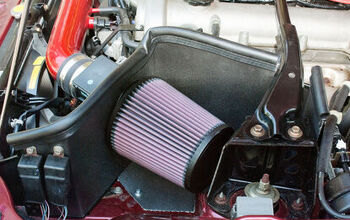


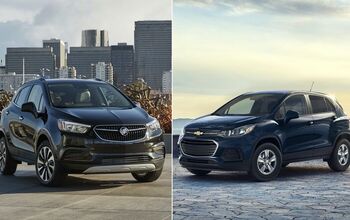
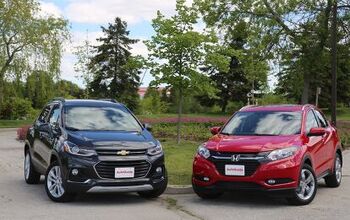
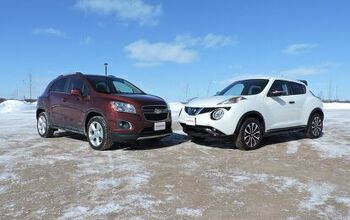
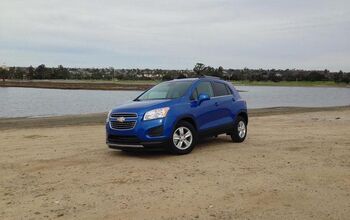










Comments
Join the conversation